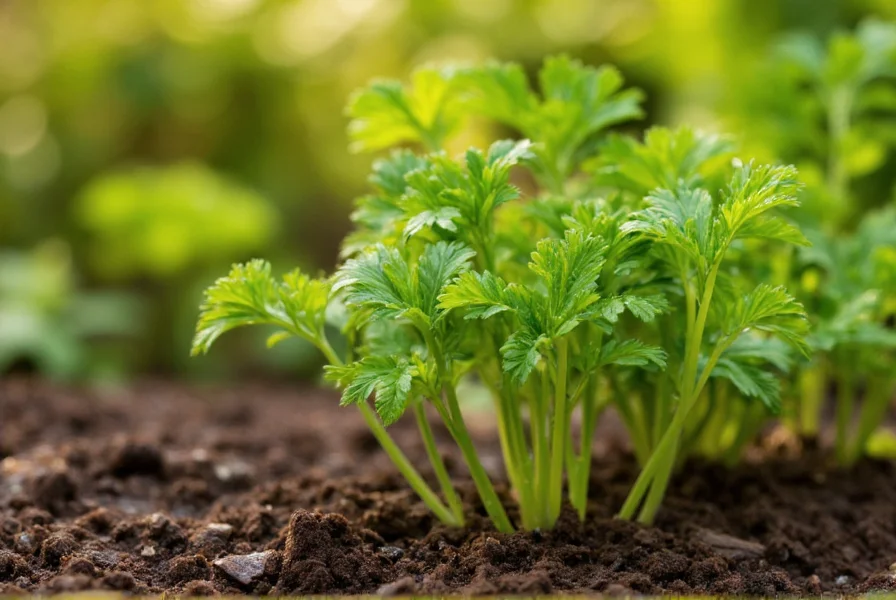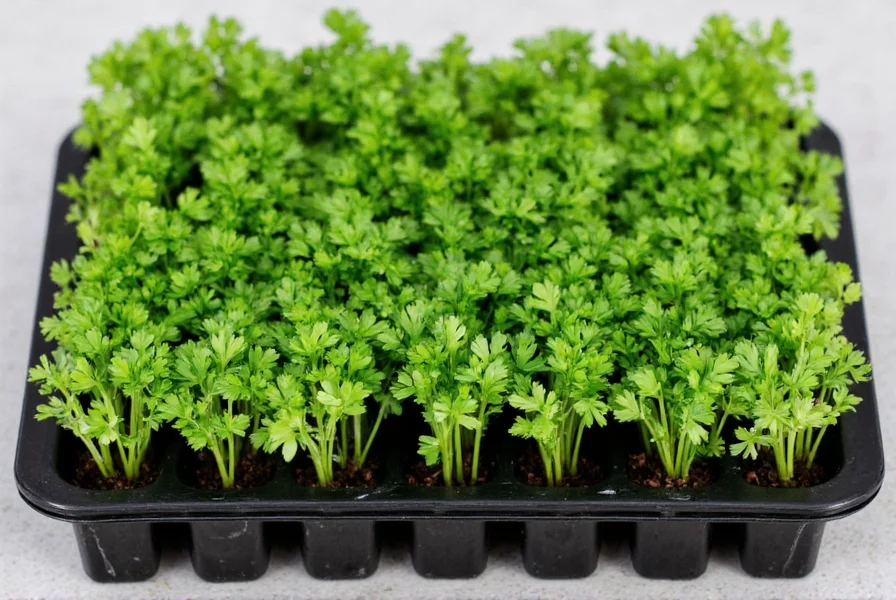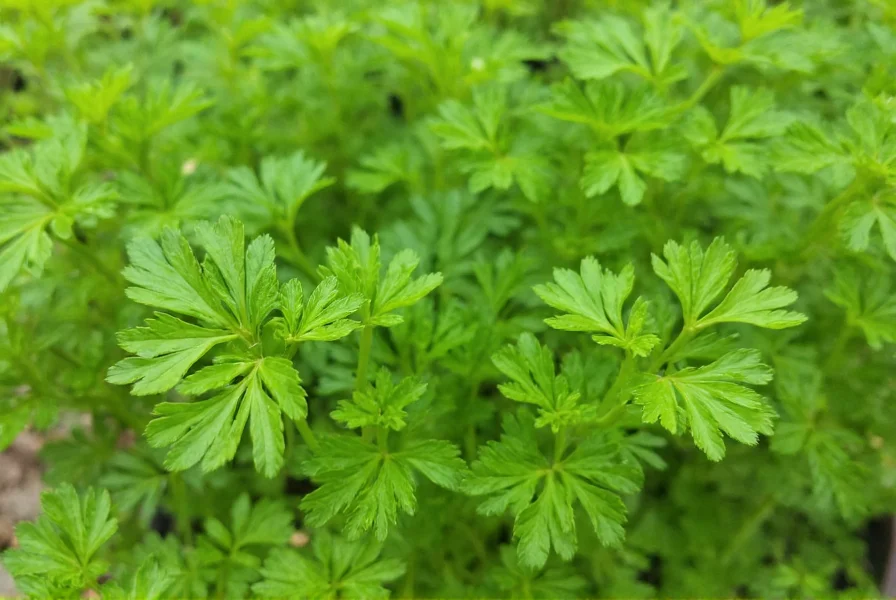The parsley plant (Petroselinum crispum) stands as one of the most versatile and nutritionally dense herbs in both garden and kitchen. Unlike many herbs that lose potency when cooked, parsley maintains its vibrant flavor and impressive nutritional profile whether used fresh or dried. This biennial herb completes its natural lifecycle over two growing seasons, making proper timing essential for maximum harvest yield and flavor development.
Understanding Parsley Plant Varieties
Gardeners and chefs recognize three primary parsley varieties, each serving different purposes:
| Variety | Flavor Profile | Best Uses | Growing Characteristics |
|---|---|---|---|
| Curly Leaf | Mild, slightly bitter | Garnishes, salads, tabbouleh | More cold-tolerant, slower to bolt |
| Flat Leaf (Italian) | Bolder, earthier, more robust | Cooking, sauces, pesto, Mediterranean dishes | Faster growth, stronger flavor, less cold-hardy |
| Japanese (Hamburg) | Root-focused, mild leaf flavor | Root vegetable in soups, leaves as standard parsley | Produces edible parsnip-like root, leaves less commonly used |
Choosing between curly and flat leaf parsley often comes down to culinary application. Flat leaf varieties contain higher concentrations of essential oils, delivering more intense flavor that holds up better in cooked dishes. Curly parsley's ruffled leaves provide visual appeal as garnishes while offering a milder taste that won't overpower delicate dishes.

Optimal Growing Conditions for Parsley Plants
Successful parsley cultivation requires attention to specific environmental factors that support healthy growth and maximum flavor development. Unlike many herbs that prefer arid conditions, parsley thrives with consistent moisture and partial shade, particularly in warmer climates.
Soil Requirements
Parsley performs best in loamy, well-draining soil with a pH between 6.0 and 7.0. Before planting, amend garden beds with 2-3 inches of compost to improve soil structure and nutrient content. The herb's taproot system benefits from loose soil that allows deep penetration—avoid compacted or rocky soils that restrict root development. Raised beds work exceptionally well for parsley cultivation, providing superior drainage while maintaining consistent moisture levels.
Sunlight Needs
While parsley tolerates full sun in cooler climates, it appreciates partial shade (4-6 hours of direct sunlight) in regions with intense summer heat. In USDA zones 7 and higher, position plants where they receive morning sun but afternoon shade to prevent premature bolting. Container-grown parsley offers flexibility to move plants throughout the season to optimize light exposure as temperatures change.
Watering Practices
Maintain consistent soil moisture without waterlogging—aim for 1-1.5 inches of water weekly. Check soil moisture by inserting your finger 1 inch deep; water when the top layer feels dry. Mulching with 2 inches of organic material helps regulate soil temperature and moisture retention. During hot spells, increase watering frequency but avoid overhead watering to prevent fungal diseases. Container plants typically require daily watering during summer months.
Planting and Propagation Techniques
Parsley's slow germination (2-5 weeks) requires patience but yields reliable results with proper technique. The herb grows successfully from seeds, transplants, or division.
Seed Starting
Soak seeds in warm water for 24 hours before planting to soften the hard outer coat and accelerate germination. Sow seeds ¼ inch deep indoors 8-10 weeks before last frost, or directly in garden beds after soil reaches 70°F. Maintain consistent soil moisture during germination—covering seed trays with plastic wrap creates a mini greenhouse effect that improves success rates. Thin seedlings to 6-8 inches apart once they develop their second set of true leaves.
Transplanting Seedlings
When moving indoor-started seedlings outdoors, begin hardening off 7-10 days before transplanting by gradually increasing outdoor exposure. Plant in cloudy weather or late afternoon to reduce transplant shock. Set seedlings at the same soil depth they grew indoors, gently firming soil around roots. Water thoroughly after planting and provide temporary shade for the first 3-4 days.

Care and Maintenance Schedule
Proper parsley plant care ensures continuous harvests and prevents common issues that reduce yield and flavor quality.
Fertilization Strategy
Apply balanced organic fertilizer (5-5-5) monthly during active growth periods. Alternatively, side-dress plants with compost tea every 4-6 weeks. Avoid high-nitrogen fertilizers that promote excessive leaf growth at the expense of flavor compounds. Container plants benefit from half-strength liquid fertilizer every 2-3 weeks during growing season.
Pruning and Harvesting
Begin harvesting outer stems when plants reach 6 inches tall, cutting stems at soil level to encourage new growth from the center. Never remove more than one-third of the plant at once. Regular harvesting prevents flowering (bolting) in the first year—once flower stalks appear, leaf quality and flavor decline rapidly. For continuous supply, succession plant every 3-4 weeks throughout the growing season.
Winter Care for Perennial Growth
Though technically biennial, parsley often survives multiple seasons in milder climates (USDA zones 5-9). Before first frost, cut plants back to 2 inches and mulch with 3-4 inches of straw. In colder zones, transplant container-grown parsley indoors near a south-facing window. Outdoor plants benefit from cold frames or row covers when temperatures drop below 25°F.
Troubleshooting Common Parsley Problems
Understanding potential issues helps maintain healthy parsley plants throughout their lifecycle.
Pest Management
Carrot root flies, aphids, and spider mites pose the greatest threats. Prevent infestations by rotating crops annually and planting companion plants like tomatoes, asparagus, or chives. For existing problems, spray affected plants with insecticidal soap solution (2 tablespoons per quart of water) every 5-7 days until pests disappear. Hand-pick larger pests like caterpillars early in the morning when they're most active.
Disease Prevention
Prevent fungal diseases like leaf spot and powdery mildew through proper spacing (8-10 inches between plants) and avoiding overhead watering. Remove affected leaves immediately and dispose of them away from the garden. If disease persists, apply neem oil solution following label instructions. Ensure good air circulation around plants by pruning crowded growth.
Nutrient Deficiency Identification
Yellowing leaves often indicate nitrogen deficiency—address with compost tea application. Purple discoloration suggests phosphorus deficiency, remedied by bone meal application. Brown leaf edges typically mean potassium deficiency, corrected with wood ash or potassium-rich fertilizer. Always confirm deficiencies through soil testing before applying amendments.
Culinary and Medicinal Applications
Beyond its decorative role as a garnish, parsley offers remarkable versatility in both kitchen and wellness practices.
Culinary Uses Beyond Garnish
Flat leaf parsley serves as the foundation for persillade (chopped parsley and garlic), gremolata (parsley, lemon zest, garlic), and salsa verde. Its leaves enhance stocks, soups, and stews when included in bouquet garni. The herb's essential oils release best when chopped just before use—avoid pre-chopping for extended periods. Parsley root (from Hamburg variety) functions as a vegetable in European cuisine, particularly in soups and roasts.
Nutritional Powerhouse
Just one-quarter cup of fresh parsley provides more than the daily recommended intake of vitamin K and significant amounts of vitamins A and C. It contains apigenin, a flavonoid with anti-inflammatory properties, and myricetin, which may help regulate blood sugar. The herb's high chlorophyll content contributes to its natural breath-freshening qualities.
Companion Planting Benefits
Parsley enhances garden ecosystems through strategic placement with compatible plants. It attracts beneficial insects like hoverflies and parasitic wasps that control aphid populations. Plant near tomatoes to improve their flavor and repel asparagus beetles. Avoid planting near alliums (onions, garlic) as they inhibit each other's growth. The herb's dense foliage provides shade for shallow-rooted lettuce during hot summer months.
Frequently Asked Questions
How long does a parsley plant typically live?
Parsley is a biennial plant that typically completes its lifecycle over two years. In the first year, it focuses on leaf production ideal for harvesting. During the second year, it bolts (produces flowers and seeds) before dying. With proper care in mild climates, some gardeners successfully maintain parsley for multiple seasons by preventing flowering through regular harvesting and providing winter protection.
Why are my parsley plant leaves turning yellow?
Yellowing parsley leaves typically indicate overwatering, poor drainage, or nutrient deficiency. Check soil moisture—parsley needs consistent but not soggy conditions. If soil remains wet for extended periods, reduce watering frequency. Yellowing can also signal nitrogen deficiency, remedied by applying balanced organic fertilizer. In container plants, yellow leaves often result from root binding—repot into a larger container with fresh soil if roots circle the pot.
Can you grow parsley indoors year-round?
Yes, parsley grows well indoors with proper conditions. Choose a container at least 8 inches deep with drainage holes, using well-draining potting mix. Place in a south-facing window receiving 6-8 hours of direct sunlight daily, or supplement with grow lights (14-16 hours daily). Maintain consistent moisture without waterlogging, and fertilize monthly with half-strength liquid fertilizer. Flat leaf varieties generally perform better indoors than curly types due to their stronger growth habit.
When is the best time to harvest parsley for maximum flavor?
Harvest parsley in the morning after dew has dried but before heat builds, when essential oil concentration peaks. Begin harvesting outer stems once plants reach 6 inches tall, cutting at soil level to encourage new growth from the center. For optimal flavor, harvest before flowering occurs—once the plant bolts, leaf quality and taste decline significantly. Regular harvesting every 2-3 weeks promotes continuous production of flavorful leaves throughout the growing season.











 浙公网安备
33010002000092号
浙公网安备
33010002000092号 浙B2-20120091-4
浙B2-20120091-4